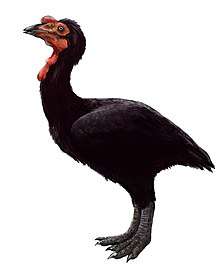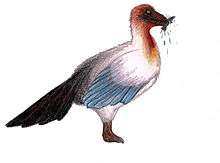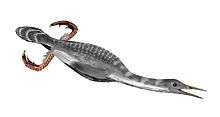Zapsalis
Zapsalis is a genus of dromaeosaurine theropod dinosaurs. It is a tooth taxon, often considered dubious because of the fragmentary nature of the fossils, which include teeth but no other remains.
| Zapsalis | |
|---|---|
 | |
| Tooth of cf. Zapsalis from the Milk River Formation, with close up of denticles | |
| Scientific classification | |
| Kingdom: | Animalia |
| Phylum: | Chordata |
| Clade: | Dinosauria |
| Clade: | Saurischia |
| Clade: | Theropoda |
| Family: | †Dromaeosauridae |
| Subfamily: | †Dromaeosaurinae |
| Genus: | †Zapsalis Cope, 1876 |
| Type species | |
| †Zapsalis abradens Cope, 1876 | |
The type species is Zapsalis abradens, from the Judith River Formation of Montana, dating to 75 million years ago, during the Campanian stage. Additional teeth attributed to Z. abradens have been found in the Dinosaur Park Formation, also dated to about 75 Ma ago. While Zapsalis-like teeth have been found in other formations dating to various time periods and assigned to this genus, they most likely belong to new genera and species.[1]
In 1876 Edward Drinker Cope named Zapsalis abradens based on a tooth found in Montana,[2] presently specimen AMNH 3953. The generic name is derived from Greek za~, "thorough", and psalis, "pair of scissors". The specific name means "abrading" in Latin.
In 1964 Richard Estes synonymised Zapsalis with Paronychodon,[3] but in 2002 Julia Sankey e.a. concluded the teeth represented a separate "?Dromaeosaurus Morphotype A".[4] In 2013 Derek Larson and Philip Currie recognised Zapsalis as a valid taxon from the Judith River and Dinosaur Park Formation. The teeth are typified by a combination of rounded denticles, straight rear edge and vertical grooves. Similar teeth from the older Milk River Formation were referred to a cf. Zapsalis.[1] In 2019, Currie and Evans announced that the Zapsalis teeth from the Dinosaur Park Formation represented the second premaxillary tooth of Saurornitholestes langstoni, in a paper describing a complete skull of that species.[5]
See also
References
- Larson, D. W.; Currie, P. J. (2013). Evans, Alistair Robert (ed.). "Multivariate Analyses of Small Theropod Dinosaur Teeth and Implications for Paleoecological Turnover through Time". PLoS ONE. 8 (1): e54329. Bibcode:2013PLoSO...854329L. doi:10.1371/journal.pone.0054329. PMC 3553132. PMID 23372708.
- Cope, E.D. (1876). "On some extinct reptiles and Batrachia from the Judith River and Fox Hills Beds of Montana". Proceedings of the Academy of Natural Sciences of Philadelphia. 28: 340–359.
- Estes, R., 1964 Fossil vertebrates from the Late Cretaceous Lance Formation, eastern Wyoming. University of California Publications in Geological Sciences 49. pp. 180
- Sankey, J.T.; Brinkman, D.B.; Guenther, M.; Currie, P.J. (2002). "Small theropod and bird teeth from the Late Cretaceous (Upper Campanian) Judith River Group, Alberta". Journal of Paleontology. 76: 751–763. doi:10.1666/0022-3360(2002)076<0751:stabtf>2.0.co;2.
- Currie, Philip J.; Evans, David C. (2019). "Cranial Anatomy of New Specimens of Saurornitholestes langstoni (Dinosauria, Theropoda, Dromaeosauridae) from the Dinosaur Park Formation (Campanian) of Alberta". The Anatomical Record. doi:10.1002/ar.24241. PMID 31497925.
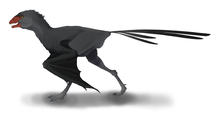
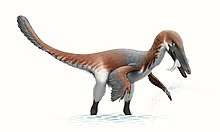
.png)
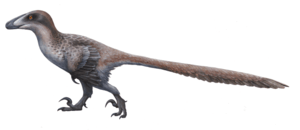

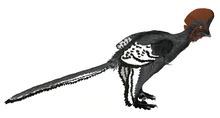
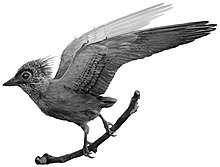

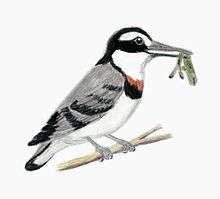
.png)
